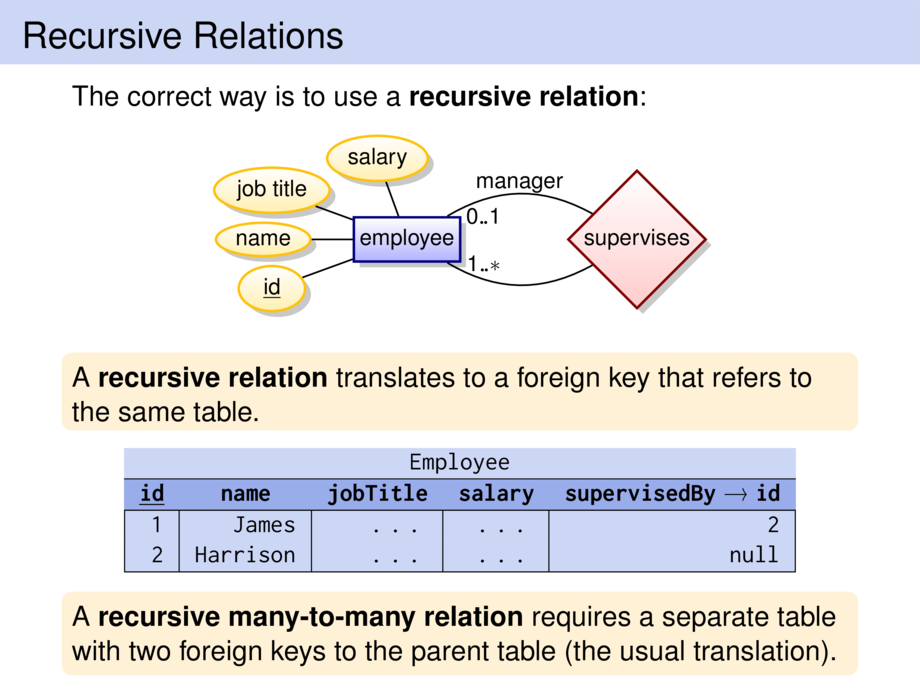



































































































74/75
\begin{frame}
\frametitle{Recursive Relations}
The correct way is to use a \emph{recursive relation}:
\begin{center}
\scalebox{.8}{
\begin{tikzpicture}[every edge/.style={link},d/.style={node distance=1cm}]
\node[entity] (employee) {employee};
\node[attribute,at=(employee),d,shift={(200:2.5cm)}] (id) {\key{id}} edge (employee);
\node[attribute,at=(employee),d,shift={(180:2.5cm)}] (name) {name} edge (employee);
\node[attribute,at=(employee),d,shift={(160:2.5cm)}] (job) {job title} edge (employee);
\node[attribute,at=(employee),d,shift={(110:1.5cm)}] (salary) {salary} edge (employee);
\node[relationship] (supervises) at ($(employee) + (4cm,0cm)$) {supervises}
edge[bend left=30] node [above,pos=.75] {$1\sldots *$} (employee)
edge[bend right=30] node [below,pos=.75] {$0\sldots 1$} node [above,pos=.5,inner sep=0] {manager} (employee);
\end{tikzpicture}
}
\end{center}
\pause
\begin{goal}{}
A \emph{recursive relation} translates to a foreign key that refers to the same table.
\end{goal}
\centering{\small\ttfamily
\colorbox{rellight}{%
\begin{tabular}[t]{|r|r|r|r|r|}
\multicolumn{5}{c}{Employee} \\ \hline
\hd{\key{id}} & \hd{name} & \hd{jobTitle}& \hd{salary} & \hd{supervisedBy$\;\to\;$id} \\ \hline
1 & James & \ldots & \ldots & 2 \\
2 & Harrison & \ldots & \ldots & null \\
\hline
\end{tabular}%
}}
\pause
\begin{goal}{}
A \emph{recursive many-to-many relation} requires a separate table
with two foreign keys to the parent table (the usual translation).
\end{goal}
\end{frame}

